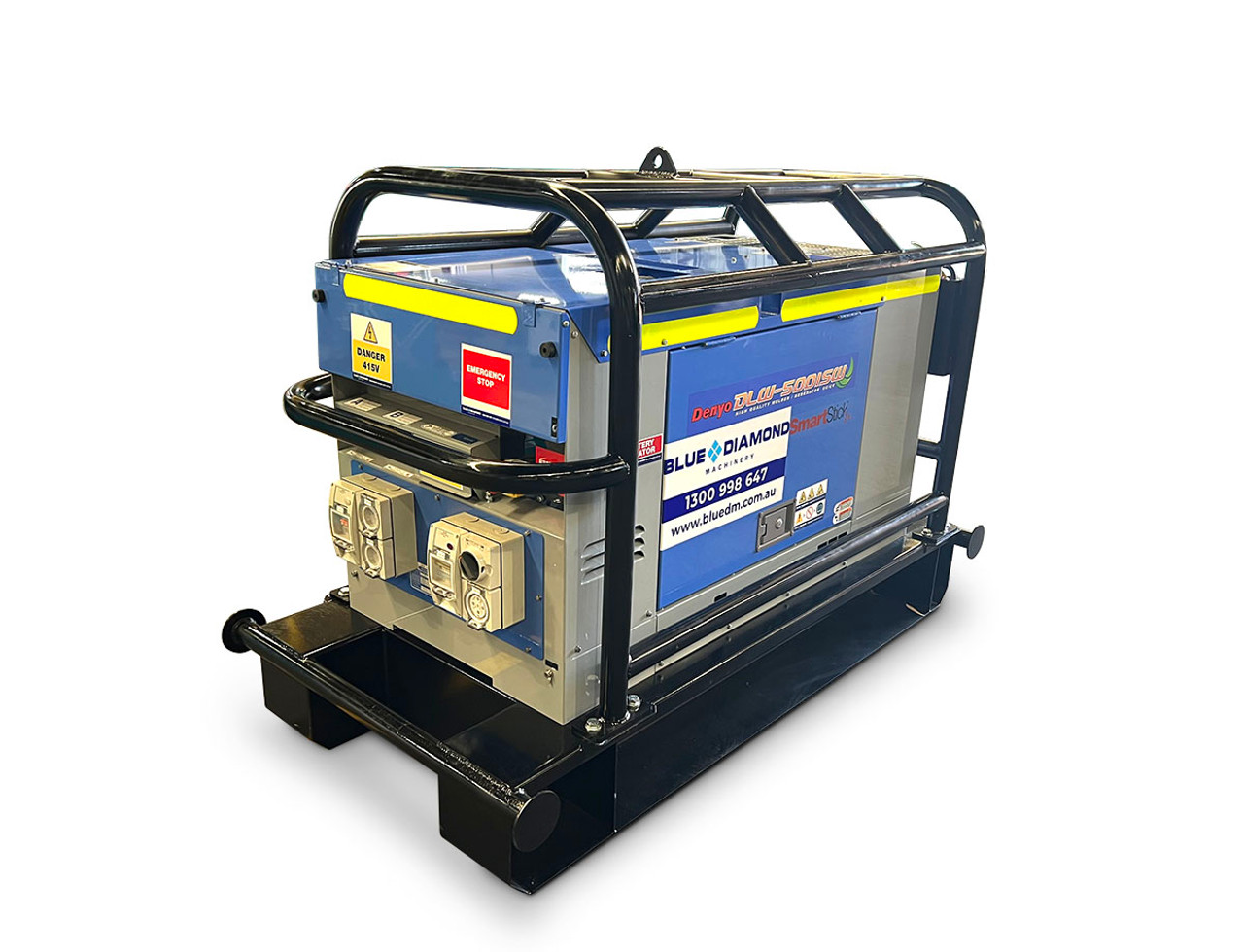Welder Generator Buyers Guide
13th Apr 2023
Welder generators are an essential piece of machinery on any remote, unpowered or off-shore construction, mining and agricultural site.
But sourcing a reliable, heavy duty and high-powered welder generator is critical.
Here, we’ll get into everything you need to know to choose the right welder generator and recommend the best one for the job.
6 Considerations For Buying A Welder Generator
1. Power Output
The first step is understanding how much power you need to operate your welder.
This will often be listed in volts and amps in the owner's manual or on your welder’s data plate. From here, you can work out the wattage of your welder by using this simple equation (volts x amps = watts).
Once you know the running watts of your welder, add an additional 20-30% on top to account for the starting wattage. For example, a 220-volt welder with 8,500 running watts will need approximately 11,000 peak watts to start.

2. Duty Cycle
A generators duty cycle rating indicates how it will perform in terms of output and capacity within a 10 minute period.
For example, a welder generator with a duty cycle of 200 amps at 30% will operate at 200A for 3 minutes, before switching off to cool down for the remaining 7 minutes.
Note: A generators duty cycle will change at different amperages. The higher the amperage output, the lower the duty cycle, and vice versa.
3. Welding Process
Keep an eye out for the welding process the generator supports.
While most modern welding machines support MIG, TIG and stick processes, others do not. Some older models may require a special accessory or add on to effectively run more advanced TIG and MIG processes.
4. AC/DC Output
Most engine-powered generators have the option to switch from DC to AC power when needed. However, there are some generators that only supply one type of current – something to be mindful of during your search.
5. Inverter Or Transformer
If you’re powering a IGBT or MOSFET welder, an inverter generator may be a good choice. Inverter generators produce clean, sine-wave power that won’t damage frequency-sensitive welders.
Transformer welders, on the other hand, are not affected by high total harmonic distortion (THD), so they’re safe for use with nearly every modern generator.
6. Altitude, Noise & Extras
When purchasing a generator for your welder, there’s a few additional factors you’ll want to consider. These include:
- Altitude. If you’re working at high altitudes, your generator will produce less wattage than it would at sea level. A general rule of thumb is to account for 3.5% power loss for every 1,000ft above sea level.
- Any extra tools or equipment. If you want to power any other power tools like grinders or drills alongside your welder, you’ll need to increase the generator size accordingly.
- Noise level. If you work on urban construction sites or residential areas, the noise output of your generator is crucial. As a standard, generators shouldn’t be louder than 75 dBA in cities and residential areas.
The Denyo DLW-500LSW - Our Top Welding Generator

The Denyo DLW-500ISW is a simple and robust 500A welder generator. Lightweight, compact and durable, it’s well suited to mobile mining and construction welding applications.
The DLW-500ISW combines a permanent magnet and newly developed current control system to deliver stable arc performance for welding rods of all sizes. It also has built-in idle control that automatically shuts off the engine when there is no load, lowering fuel consumption and improving performance.
To improve overall safety, the DLW-500ISW is equipped with an emergency shut off that protects the generator from overload and low oil pressure.
DC Welding Power:
- Rated Output (kVA): 15
- Rated Current (A): 450
- Rated Voltage (V): 38.4
- Wielding Current Range (A): 40-500
- Rated duty cycle (%): 60
AC Power Source:
- Frequency (Hz): 50/60
- Rated Output (kVA): 15
- No. Of
- Phase: 3
- Power Factor: 0.8
Get the Right Advice. Contact Us Today
With years of experience, you can rely on Blue Diamond Machinery to provide the right advice and a generator to meet your unique requirements.
For more information on the best model to suit your power requirements, contact us today or speak to one of our expert team on 1300 998 647.



